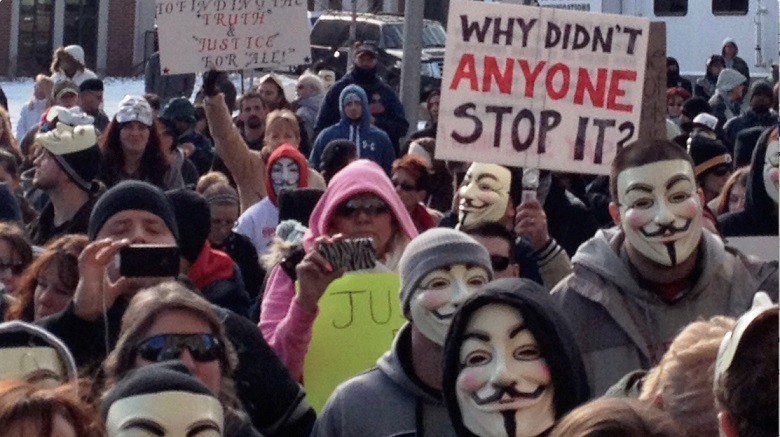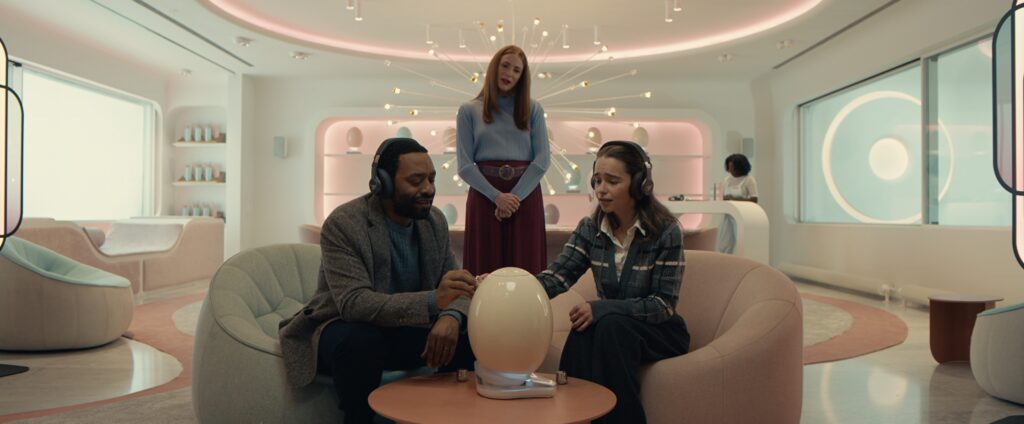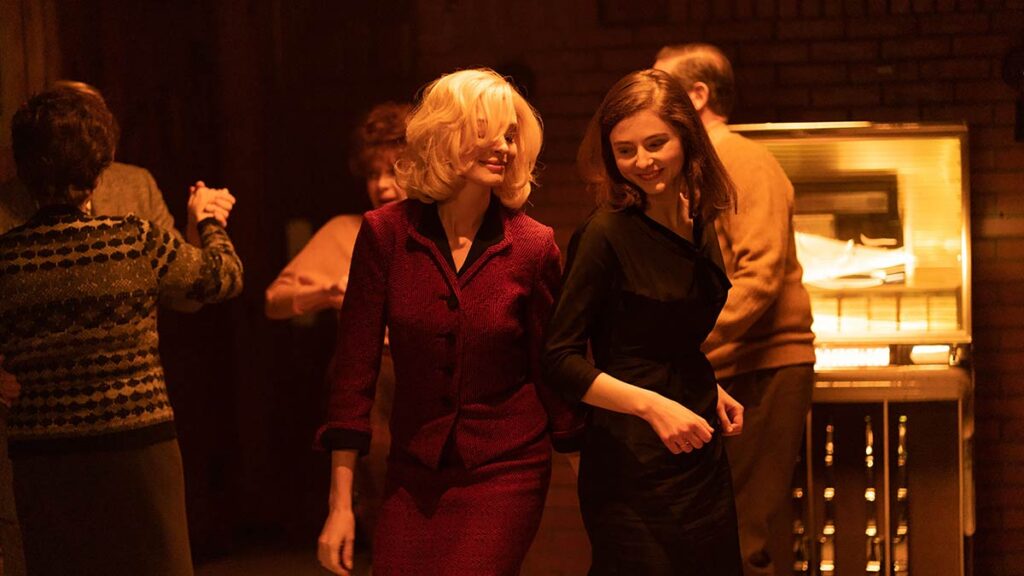Nancy Schwartzman is a documentary film director, producer, and media strategist who uses storytelling and technology to create safer communities for women and girls. She directed short doc “The Line,” and PBS/POV and BBC featured “xoxosms.” A globally recognized human rights activist, her work focuses on creating impact around the prevention and transformation of gender-based violence. She created the White House award-winning mobile app “Circle of 6,” designed to reduce sexual violence used by over 350,000 people in 36 countries.
W&H: Describe the film for us in your own words.
NS: In small-town Ohio, at a pre-season football party, a horrible incident took place, and what transpired would garner national attention and result in the sentencing of two key offenders. As amateur crime blogger Alex Goddard uncovers disturbing evidence on Facebook, Youtube, and Twitter documenting the assault of a teenage girl by members of the beloved high school football team, questions linger around the collusion of teen and adult bystanders.
“Roll Red Roll” explores the complex motivations of both perpetrators and bystanders in this story, to unearth the attitudes at the core of their behavior. The Steubenville story acts as a cautionary tale of what can happen when adults look the other way and deny that rape culture exists.
With unprecedented access to police documents, exhibits, and evidence, the documentary feature unflinchingly asks: “why didn’t anyone stop it?”
W&H: What drew you to this story?
NS: “Roll Red Roll” is a story that I felt compelled to tell. I went to a high school not unlike Big Red. I was a varsity athlete growing up and in college and I come from a sports family. I understand the love and passion for sports and the intense relationship between a player and a coach, and what it means to your family to succeed on the field or court. The entire town of Steubenville coming together to celebrate and stand together every Friday is a beautiful thing. But to quote journalist Rachel Dissell, “Is this football town putting its daughters at risk, by protecting its sons in a situation like this?”
In “Roll Red Roll” we see young men acting with total privilege and without accountability. This wasn’t a “one-off” incident. This was a pattern of behavior that went beyond just a juvenile criminal trial, but led to a Grand Jury investigation of school officials. There should have been no question about what happened, and yet: the entire town was divided.
I started this film one year after the incident, in August 2013. You couldn’t walk into an establishment and not hear people talking about it — the hurt, the anger, the fatigue. The tension between respecting and keeping harmony in a small town and speaking out against gender-based violence was distressing for so many people. We documented first-hand the conflicts and the walls that went up to speaking out or going against the status quo.
The incident was planned and witnessed and an entire conversation was happening on social media about it. Prosecutors had to sift through over 400,000 text messages and hundreds and hundreds of tweets to figure out what was evidence and what was bravado.
I read the text messages and the social media posts, and they chilled me. I felt like I knew these kids. They reflected some of the attitudes of my high school growing up.
I wanted to explore the undercurrents of this compelling and frightful situation. The behavior wasn’t unfamiliar to me, but the social media platform was new. I wanted to know what empowered boys to talk about rape so casually, and broadcast it so publicly. It was all out there. That’s what made it so shocking.
Why didn’t anyone stop it?
If we want to understand what is “rape culture” then here it is, laid bare. I just couldn’t look away. I’ve been working to transform culture around gender-based violence for over 10 years, using film and technology in service of these goals. I’ve always been fascinated by technology and youth culture, and how while technology is mainly neutral, it is the way we use it — to connect, the help, to harm that is the variable. Seeing it overlap in the gender space — I was amazed at the power of social media: to incriminate, to empower and to shine a light on darkness.
This entire thing was documented on social media and shared publicly. The bravado and the language used by the kids to talk about their classmates and young girls were astonishing. Anyone could see it. And the lack of empathy was chilling.
The film provides an opportunity to look at a regular American town. We are asking teenagers to “know better” but the adults in their lives aren’t modeling better behavior. There were school administrators and teachers that heard rumors, and there were coaches who did nothing, or defended players without asking the tough questions. And by doing nothing, and not taking it seriously, they were enabling it — excusing and justifying it, or looking the other way.
This situation underscores the need for responsibility and for us to behave as friends, parents, family members, fellow classmates, teachers, school administrators, and coaches. Everyone in communities need to make sure that we believe survivors, we investigate carefully, and this behavior stops.
Now we are at this incredible #MeToo moment,where men and mainstream audiences are actually listening to the reality of our experiences, and it’s time to shift our attention. We need to look closely at those who commit assault, so we can identify it, prevent it, and ultimately transform our culture.
The bottom line is that rape is preventable. Steubenville is just like your town or school. Watching and studying the police interviews, the story shows clearly that rapists and bystanders are not “monsters.” They are us — our sons our fathers, our coaches, our friends.
When we turn them into “monsters” it makes rape hard to “see” and eradicate. We as individuals and communities have to take responsibility and teach accountability to our children so that they understand this is wrong. And that speaking up and intervening is the right thing to do, even if no one else is doing it.
I am hopeful that audiences take these lessons to heart and will move forward in creating safe, loving, and caring communities for our future generations.
W&H: What do you want people to think about when they are leaving the theater?
NS: I want people to feel connected, and to have a deeper understanding of how rape happens and what is our collective responsibility to prevent it. I want people to think about their own lives and experiences as younger people or as adults. If they’ve been in similar situations and not done anything, or looked away, and ultimately, how we are all responsible for each other.
W&H: What was the biggest challenge in making the film?
NS: Coming to Steubenville while events were unfolding, folks in the town were suspicious and frustrated and hurting, and understandably so. Building trust took time. To really show up and be present and listen and get to know people and let them get to know us — it took the time it needed to take.
Another fascinating challenge in the filmmaking process was having to change the entire direction of the film midway. We started the film thinking we would tell the story about the aftermath of the crime on the entire town, and then receiving access to the police and prosecutor’s files.
We went from an “aftermath” story to suddenly being able to craft something more in the moment, more immediate, and were able to connect the dots on the different crimes occurring and the players involved. We essentially had to make an entirely different film and spent a year blending those elements together in the edit.
W&H: How did you get your film funded? Share some insights into how you got the film made.
NS: We knew that we couldn’t use crowdfunding to make this film out of the sensitivity of the subject and the delicacy of access.
We’ve been so blessed during the process of making this film and have had incredible supporters including the Ford Foundation, Fork Films, Bertha / Doc Society, IDA, Tribeca, Chicken & Egg, and more. Our executive producers — all of whom are women — include Barbara Dobkin, Geralyn Dreyfous, Chandra Jessee, Regina K. Scully, and Patty Quillen.
W&H: What does it mean for you to have your film play at Tribeca Film Festival?
NS: It’s so exciting! To be part of such an amazing festival with such an incredible documentary lineup is a dream. And to be surrounded by friends and family, in my hometown, is a dream.
Tribeca is also showing real leadership in highlighting the #TimesUp movement and making #MeToo part of the conversation.
W&H: What’s the best and worst advice you’ve received?
NS: Best advice: “Vet, vet, vet,” or in other words, do your homework. Research, cross-check, double check, listen to your gut, listen to your colleagues, and then make a long-term commitment or partnership.
Worst advice: “You don’t need to pay extra for the GPS on the rental car.”
W&H: What advice do you have for other female directors?
NS: Wouldn’t it be great to not have the “female” designation? Til then, hire women, gather with women, share stories, share budgets, share ideas. Build and strengthen community — ask that we all get more money and opportunities collectively
W&H: Name your favorite woman-directed film and why.
NS: Oh! There are so many. Sally Potter’s “Orlando, Catherine Breillat’s “Fat Girl” and “Virgin,” Jane Campion’s “Sweetie.”
If I had to pick one, possibly “Fat Girl” for the brutality, poignancy, and longing in the performances and story. It was also banned in Canada for its portrayal of teen sexuality.
W&H: Hollywood and the global film industry are in the midst of undergoing a major transformation. Many women — and some men — in the industry are speaking publicly about their experiences being assaulted and harassed. What are your thoughts on the #TimesUp movement and the push for equality in the film business?
NS: We are truly in a transformational moment. Finally people are listening. More people need to speak up because there are strength in numbers — but the burden should not lie on the victims to change this by speaking up. We’ve been speaking.
Now what’s incredible is we are seeing more men stepping up as allies. Men need to be more vocal in wanting to change the culture and create more equitable spaces for women in the industry — no all-male panels, no all-male meeting rooms, no all-male sets. We need true parity, and men need to push for this too.







